1. ADOPTION and MARKETGROWTH of MARKETING AUTOMATION

67% of Marketing Leaders currently use a Marketing Automation Platform. – Salesforce “State of Marketing” (2017)
35,2 % of the respondents said they currently utilize marketing automation. 64,8 % answered that marketing automation isn’t being used yet by their company. – Liana “The Benefits and Challenges of Marketing Automation” (2017)
Over the next two years, an additional 21% of Marketing Leaders plan to use a Marketing Automation Platform. – Salesforce “State of Marketing” (2017)
Almost 40 % of those not yet using marketing automation are going to invest in it in the next 12 months. Only a tenth of the respondents don’t plan to invest in marketing automation within the next 12 months. – Liana “The Benefits and Challenges of Marketing Automation” (2017)
91% of the most successful users agree that marketing automation is “very important” to the overall success of their marketing across channels. – Marketo & Ascend2 “Marketing Automation Strategies for Sustaining Success” (2015)

The US Marketing Automation Software industry is a $3.3B market in 2017, growing 30%+ annually – SharpSpring“Investor Presentation Jan 2018” (2018)
Nearly two-thirds (63%) of the “Very successful” use their marketing automation systems extensively, while more than a third (37%) achieved best-in-class status with limited use. – Three Deep & Ascend2 “Marketing Automation Trends for Success” (2016)
27% of companies rate say they are at Marketing automation maturity level “New”. – LeadMD “The 2016 Marketing Maturity Benchmark Report” (2016)
Only 21% of respondents reported an individual maturity level of above average or higher with Marketing automation – LeadMD “The 2016 Marketing Maturity Benchmark Report” (2016)
63% of companies successful in Marketing Automation plan to increase their Marketing Automation budget. The companies with successful marketing automation programs will invest in further success in the coming year. – Marketo & Ascend2 “Marketing Automation Strategies for Sustaining Success” (2015)
63% of companies outsource all or part of marketing automation strategy planning. 51% uses a combination of outsourced and in-house resources, 12% outsourced all to a specialist. 37% uses inhouse resources only. – Ascend2 “Marketing Automation Trends Survey” (2016).
The majority of users think Marketing Automation is worth the price. 10% finds it inexpensive, 47% fairly priced, 22% pricey but worth it and 11% too expensive. 10% was not sure. – VB Insight “Marketing Automation, how to make the right buying decision” (2015)

8% of B2C and 21% of B2B marketers find Marketing Automation one of their Top Digital Priorities. – Adobe“Quarterly Digital Intelligence Briefing” (2014)
61% of respondents are not using marketing automation at all and the remaining responses were split over a large range of 27 different vendors and combinations of solutions. – TFM&A “The 2015 Marketing Technology Report” (2015)
Marketing automation is used by 42% of companies, CRM / sales automation systems by 54%, while Email marketing technology has the highest adoption. It is used by 82% of companies. – Ascend2 “Marketing Technology Strategy” (August 2015)

Nearly 70% of businesses are using a marketing automation platform (MAP) or currently implementing one. – Aberdeen Group “State of Marketing Automation 2014: Processes that Produce” (2014)
42% of CRM users plan to increase spending in marketing automation, – Software Advice “Customer Relationship Management Software UserView” (2014)
43% of companies using a marketing automation platform (MAP) have been doing so for over 4 years. – Aberdeen Group “State of Marketing Automation 2014: Processes that Produce” (2014)

26% of marketers make extensive use of marketing software to manage lead generation, 36% make limited use of marketing software for it. – Ascend2 “Lead Generation Strategy Survey” (2014)
25% of Fortune 500 B2B companies have adopted marketing automation. – ClickZ Fortune 500 B2B Adoption of Marketing Tools study (2013)
19% indicated they switched Marketing Automation Providers (MAP) providers recently or were currently doing so. – Aberdeen Group “State of Marketing Automation 2014: Processes that Produce” (2014)
Adoption and Investments in Marketing automation differs heavily per industry.

- Maintainers (technology, financial markets, life sciences, and oil and gas industries) are fine-tuning their earlier marketing automation investments.
- Transformers (insurance, health insurance, media, retail, and telecoms) are investing in business change, of which marketing automation is potentially a key component.
- Skeptics (manufacturing, professional services, and retail banking) are evaluating how marketing automation can best be applied to their industries.
- Laggards (higher education, education, government, healthcare, and utilities) are yet to actively consider wholesale adoption of marketing automation.
– Ovum “Industry Adoption of Marketing Automation in Europe” (dec 2013)
66% of average performing B2B companies indicates that their current technologies are sufficient to scale end-to-end marketing over the next 1-3 years. For 34% they aren’t. ACT-ON and Gleanster Research “Rethinking the Role of Marketing “ (2015)
53% of all respondents are currently using or applying marketing automation. Another 17% are currently evaluating or considering marketing automation. Pepper Global “B2B Marketing Automation Report 2014”
In the America’s there are significantly higher adoption with 69% of respondents using or applying marketing automation. In EMEA this is 39% and in APAC only 36%. – Pepper Global “B2B Marketing Automation Report 2014”
97% of B2B respondents used email marketing software. Customer relationship management (CRM) and marketing automation suites were the next most commonly used technologies, at 97 and 96 percent.B2B – Software Advice and Research Now “Demand Generation Benchmark” (2014)

Of the top performers in B2B 69% use Marketing automation for Customer acquisition and 50% for Customer Retention. – ACT-ON and Gleanster Research “Rethinking the Role of Marketing “ (2015)
53% of the B2B organizations surveyed have adopted marketing automation systems, a greater number than the 43% adoption rate at organizations identified as B2C and combination B2B / B2C organizations. – ResearchCorp“Demand Generation Adoption Survey” (2014)
In higher revenue tiers, a higher percentage of companies have adopted Marketing automation.
- 60% in companies with over $500M revenue,
- 10% in companies with $20M – $500M revenue,
- 5% in companies with $5M – $20M revenue,
- 3% in micro companies with less than < $5M revenue
Raab Associates “Marketing Automation 2014 Industry Overview” (2014).
20% of agencies make extensive use of marketing automation. Only 30% of agencies aren’t using marketing automation to distribute content, prove inbound marketing ROI, and improve inbound effectiveness with personalized targeting. SharpSpring & Ascend2“Inbound marketing: Benchmarks from the Agency Perspective” (2014)
58% of top-performing companies; where marketing contributes more than half of the sales pipeline, have adopted marketing automation. – Forrester Research “Gauging Your Progress and Success” (2013)
33% have already implemented marketing automation software within their businesses and half of all respondents of (Faststats software users) plan, or aspire, to do so. 11% plan to implement marketing automation immediately and 19% within the next year. Only a few respondents said they weren’t (3%), or were unlikely (5%) to implement marketing automation software. – Source: Apteco Ltd “Trend Report Data driven marketing 2014 / 2015”

Source: Apteco Ltd “Trend Report Data driven marketing” (2015)
63% of B2B marketers allocate 10–29% of their marketing budget to marketing automation. – Pepper Global “B2B Marketing Automation Report 2014”

For a majority of B2B marketers, marketing automation budgets stay flat (48%) or increases (41%) in the coming year. – Pepper Global “B2B Marketing Automation Report 2014”
23% of marketers are not using Lead Generation Marketing Software at the moment, but are planning to in the future. – Ascend2 “Lead Generation Strategy Survey” (2014)
Marketing automation adoption is higher in companies with more employees. Adoption is 76% of companies with >100 employees, 26% in mid-sized companies of 10-100 employees and 18% amongst companies with Buyer Zone “The State of B2B Lead Generation 2013 Report” (2013)
91% of buyers in 2013 were evaluating marketing automation for the first time. – SoftwareAdvice “Marketing Automation Software BuyerView” (2014)
2. Benefits and Goals of Marketing Automation
Nearly two thirds of companies surveyed (63%) expect to realize the benefits of their marketing automation system within six months of implementation. – Ascend2 “Marketing Automation Trends Survey” (2016).

Almost 70% of the respondents finds improved targeting of messages is the most important benefit of marketing automation. – Liana “The Benefits and Challenges of Marketing Automation” (2017)
Improved customer experience (45,9 %), improved quality of leads (37,7 %) and an increased number of leads (34,9 %) are deemed important benefits of marketing automation. – Liana “The Benefits and Challenges of Marketing Automation” (2017)
Marketers say the most important objectives of a marketing automation strategy are:
- Optimizing productivity (43%)
- Increasing marketing ROI (41%)
- Improving campaign management (40%)
- Improving database quality (39%)
- Acquiring more customers (39%)
- Measuring performance (37%)
- Aligning Marketing and Sales (24%)
– Adestra “State of Marketing Automation Benchmarks for Success” (2017)

Only 24% of top marketers included alignment with sales as a priority for marketing automation. This is a potential miss. – Adestra “State of Marketing Automation Benchmarks for Success” (2017)

Marketers say that the biggest benefits of Automation are Saving time (74%), Increased customer engagement (68%), More timely communications (58%) and Increased opportunities including up-selling (58%) – AdestraMarketer vs Machine (2015)
45% of agencies rely on marketing automation platforms to show ROI and 42% use marketing automation to measure performance – SharpSpring State of Marketing Automation for Agencies” (2017)

42% of agencies note client acquisition as a top objective in their marketing automation strategy. – SharpSpringState of Marketing Automation for Agencies” (2017)
60% of B2B marketers say they’ve been more focused on improving audience segmentation and personas over the past 18 months. – Salesforce “State of Marketing” (2017)

92% report improving their qualified Lead pipeline as a top organisational goal. Followed by Customer retention (81%) and Lead/Pipeline velocity (Nuture, edication and price insulation) with 66% – LeadMD “The 2016 Marketing Maturity Benchmark Report” (2016)
Increasing sales revenue (53%), lead nurturing (43%) and customer engagement (37%) are the most important objectives of a marketing automation strategy. – Marketo & Ascend2 “Marketing Automation Strategies for Sustaining Success” (2015)
B2B marketers say the #1 benefit of marketing automation is the ability to generate more and better leads. – Pepper Global “Marketing Automation Trends Report 2014” (2013)
The most important strategic goals of a marketing automation strategy are Increasing lead generation (61%), lead nurturing (57%) and sales revenue (47%). Next are Improving customer engagement (36%), marketing productivity (29%), improve measurability (28%) and campaign targeting (22%). – Ascend2 “Marketing Automation Trends Survey” (2016).
3. Marketing Automation Results
High Performers are 3.2x more likely that underpreformers to say their technology stack is extremely or very effective at collaboration across marketing functions. – Salesforce “State of Marketing” (2017)

High Performers are 2.6x more likely that underpreformers to say their technology stack is extremely or very effective at delivering marketing efficiencies like automation. – Salesforce “State of Marketing” (2017)

Nearly 90% of agencies say their marketing automation strategy is successful, while only 2% count themselves as “worst in class.” – SharpSpring State of Marketing Automation for Agencies” (2017)
Only 8% of companies see increased revenues within 6 months of adopting marketing automation. After one year of MA use 32% claim to see increased revenue. For those to have been using it for more than two years the figure is 40%. – B2Bmarketing.net and Circle Research “Benchmarking Report Marketing automation” (2015)

33% of company respondents still consider their automated email marketing programmes to be not successful. Only 8% deemed their efforts very successful. – eConsultancy “Email Marketing Industy Census” (2017)
80% of marketing automation users saw their number of leads increase, and 77% saw the number of conversions increase. – VB Insight “Marketing Automation, how to make the right buying decision” (2015)

Half of the companies reported no increase at all in qualified Leads since implementing Marketing Automation, while only 19% saw a dramatic increase in qualified leads with marketing automation. – LeadMD “The 2016 Marketing Maturity Benchmark Report” (2016)
17% say marketing Automation has been very beneficial for their company, 57% quite beneficial, 26% see limited to no benefit. – B2Bmarketing.net and Circle Research “Benchmarking Report Marketing automation” (2015)

27% of those new to the technology report “More relevant messages” as a result, but that increases with time to 74% for the veteran Marketing automation users started using MA more than two years ago. – B2Bmarketing.net and Circle Research “Benchmarking Report Marketing automation” (2015)
Only 32% of companies consider marketing automation “Very successful” at achieving their important goals. – Three Deep & Ascend2 “Marketing Automation Trends for Success” (2016)

Marketers familiar with pipeline marketing are 48% more likely to see ROI greater than 1.5x. Marketers who identify as pipeline marketers are 119% more likely to report sales and marketing alignment. – Heinz, Reachforce and research partners “The State of Pipeline Marketing Report” (2016)
67% of B2B marketers say they see at least 10% increase in sales opportunities through lead nurturing, with 15% seeing opportunities increase by 30% or more. – DemandGen “2014 Lead Nurturing Benchmark Study” (Oct 2014)
The most useful metrics for measuring marketing automation performance are Conversion Rate and Revenue Generated , say 58% of best in class Marketing Automation users. – Three Deep & Ascend2 “Marketing Automation Trends for Success” (2016)

B2B marketers who implement marketing automation increase their sales-pipeline contribution by 10%. Forrester Research “The Forrester Wave Lead-To-Revenue Management Platform Vendors” (2014)
Marketing automation high performers have an average of 60% higher lead-to-sale conversion rating. These high performers rate cost of customer acquisition (COCA) 1.4x stronger – PR20/20 “Marketingscore report” (2014)
B2B marketers see an average 20% increase in sales opportunities from nurtured leads versus non-nurtured leads after successfully deploying a lead nurturing program – DemandGen “Calculating the Real ROI from Lead Nurturing” (Aug 2013
Companies that have adopted marketing automation perform well compared to companies that haven’t:
- 45% regularly repurpose content for efficiency, compared with 28% of companies without marketing automation
- 54% capture intelligence for the sales team, compared to 25% without marketing automation
- 49% customize content to the Buyer Journey stages, compared to 21% without marketing automation
- 59% can use intelligent targeting to trigger content, compared to 17% without marketing automation
– The Lenskold Group, “2013 Lead-Generation Marketing Effectiveness Study” (2013)
Companies using marketing automation see 53% higher conversion rates from initial response-to-MQL and a revenue growth rate that is 3.1% higher than non-users. – Aberdeen Group “Marketing Lead Management Report” (2012)
63% of companies that are outgrowing their competitors use marketing automation. – The Lenskold Group “2013 Lead Generation Marketing Effectiveness Study” (2013)
After implementing a marketing automation platform the increased collaboration between sales and marketing leads to:
- 17% advantage in capturing insight from prospects and customers
- A 13% advantage executing and defining field programs
- A 12% advantage in managing leads and lead pipelines
– Forrester Research “The Forrester Wave: Lead-To-Revenue Management Platform Vendors” (Q1 2014)
78% of successful marketers say marketing automation systems are most responsible for improving revenue contribution. – The Lenskold Group 2013 Lead-Generation Marketing Effectiveness Study, (2013)

68% of Best-in-Class companies are using lead scoring, compared to just 28% of Laggard firms. – Aberdeen Group“State of Marketing Automation 2014: Processes that Produce” (2014)
Best-in-Class firms are more than 2X more likely to use lead nurturing with a MAP than Laggard firms (68% vs. 27%). – Aberdeen Group “State of Marketing Automation 2014: Processes that Produce” (2014)
Best-in-Class firms are more than 4X more likely to use database segmentation and targeting with a Marketing Automation Provider than Laggard firms. A difference of 78% vs. 23%. – Aberdeen Group “State of Marketing Automation 2014: Processes that Produce” (2014)
Best-in-Class companies reduced close cycle time by an average of 49%, compared with a 30% improvement by all other companies. – Aberdeen Group “State of Marketing Automation 2014: Processes that Produce” (2014)
88% of top-performing companies are effective in routing “hot” leads to Sales vs. 57% of All Others. – Aberdeen Group “State of Marketing Automation 2014: Processes that Produce” (2014)
B2C marketers who are using automation- including everything from birthday emails to cart abandonment programs – have seen conversion rates as high as 50%. – eMarketer “Email Marketing Benchmarks” (2013)
Best-in-Class companies saw a 36% conversion rate from marketing response (raw lead) to marketing-qualified lead (MQL) vs. 18% for All Others. – Aberdeen Group “State of Marketing Automation 2014: Processes that Produce” (2014)
Companies that use marketing automation are 3 times more likely to track and attribute their content-marketing efforts to multiple touchpoints than companies without automation (36% vs 11%). – The Lenskold Group “2013 Lead Generation Marketing Effectiveness Study” (2013)
4. Barriers to adoption and effectiveness of Marketing Automation
The lack of expertise and know-how (55,6 %), as well as lack of human resources (48,1 %) are most common reasons why companies are not using marketing automation. – Liana “The Benefits and Challenges of Marketing Automation” (2017)

The most significant barrier to marketing automation success is the lack of an effective strategy (52%) . – Ascend2“Marketing Automation Trends Survey” (2016).
The most significant barriers to marketing automation success are
- Lack of an effective strategy (52%)
- Complexity of the system (42%)
- Inadequate contact data quality (38%)
- Lack of employee skills (32%)
- Lack of relevant content (31%)
- Marketing and sales alignment (30%)
- Budget constraints (27%)
– Ascend2 “Marketing Automation Trends Survey” (2016).

Main barriers to adoption of Marketing automation are: 1) No Need 2) No budget 3) No management approval. – ResearchCorp “Demand Generation Adoption Survey” (2014)
Technology integration complexity is the most challenging obstacle to success, 50% of companies indicate. The result is that only 25% of companies have extensively integrated their disparate marketing technology systems. Nearly as many (22%) have not integrated their marketing technologies at all. – Ascend2 “Marketing Technology Strategy” (August 2015)

The biggest problem areas when using Marketing Automation for less than 2 years are: Pipeline Reporting, Measuring marketing campaign effectiveness and increasing sales effectiveness – HeinzMarketing and Ontarget“Marketing Automation Effectiveness and Performance Survey” (2014)
The most challenging obstacles to success are lack of quality content (40%), budget constraints (38%) and the lack of an effective marketing automation strategy (38%). – Marketo & Ascend2 “Marketing Automation Strategies for Sustaining Success” (2015)
A lack of mature marketing practices / processes is the #1 reason for not implementing a marketing automation platform. Indicated by 45% not currently using a MAP. – Aberdeen Group “State of Marketing Automation 2014: Processes that Produce” (2014)

61% agree that the implementation process of Marketing Automation was difficult – B2Bmarketing.net and Circle Research “Benchmarking Report Marketing automation” (2015)
54% of marketers that hadn’t implement Marketing Automation, said it was part of their plan, but they have other elements in need of more immediate attention. 21% said that the cost structures where Prohibitive. – Redeye and TFM&A Insights “The Marketing Automation Report 2014” (2014)
13% of the marketers said a Lack of technical proficiency in their team was stopping them from adopting Marketing Automation. A lack of understanding of benefits is holding back 12% – Redeye and TFM&A Insights “The Marketing Automation Report 2014” (2014)
57% of respondents admit their marketing infrastructure is separated by channel, not wel-integrated, or lacking entirely. – Forrester Research & Oracle “Why You Need To Be A Modern Marketer” (2014)
Only 14% have standardized, fully integrated cross-channel marketing automation platforms, with 42% of retailers standing out as more advanced than other verticals using this type of solution. – Forrester Research & Oracle“Why You Need To Be A Modern Marketer” (2014)
66% marketers reported allocating less than 10% of their budget to Marketing Automation. – Regalix “The State of Marketing Automation” (2014)
54% marketers who have not yet implemented Marketing Automation cite lack of budgets as a major obstacle preventing implementation. – Regalix “The State of Marketing Automation” (2014)
5. Top Reasons for purchasing Marketing Automation
With 64%, Ease of implementation is the No. 1 criterion for choosing a marketing automation platform, followed by Technical support (42%) and cross-platform integration (41%). – Adestra “State of Marketing Automation Benchmarks for Success” (2017)

Only 23% say clients and recommendations factor into the evaluation for choosing a marketing automation platform. – Adestra “State of Marketing Automation Benchmarks for Success” (2017)

B2B marketing managers say the most important criteria for marketing automation software are (1) price, (2) product integration (e.g., CRM, social, web, mobile), and (3) ease of use. – Pepper Global “Marketing Automation Trends Report 2014” (2013)
86% marketers consider ‘ease of use’ as the most important criterion when evaluating automation tools. – Regalix“The State of Marketing Automation” (2014)
Analytics and reporting (52%), Campaign management (46%) and Lead nurturing (46%) are considered the most useful Marketing Automation features. Followed by lead nurturing (46%), email marketing (42%), Integration capabilities (40%), Lead scoring (32%) and list segmentation (26%) – Ascend2 “Marketing Automation Trends Survey” (2016).

Lead nurturing (57%), Analytics and reporting (52%) and List segmentation (39%) are considered the most valuable Marketing Automation features. – Marketo & Ascend2 “Marketing Automation Strategies for Sustaining Success” (2015)

CMOs at top-performing companies say that the most important reason for implementing marketing automation is to increase revenue (79%) and get higher quality leads (76%). – Gleanster “Q3 2013 Gleanster Marketing Automation Benchmark” (2013)

In B2B Access to customer data (95%), Marketing alignment with sales (90%), fragmented marketing systems (83%) and limitations with current technologies (80%) are the 4 top challenges for reaching current marketing objectives. ACT-ON and Gleanster Research “Rethinking the Role of Marketing “ (2015)
17% of marketers described marketing automation software as “extremely important” for Demand Generation Success, 24% as “very important”. – Software Advice and Research Now “Demand Generation Benchmark” (2014)
The most important criteria for a marketing automation system for CMOs are ease-of-use (92%) and the ability to tie marketing performance to sales (72%). – Gleanster “Q3 2013 Gleanster Marketing Automation Benchmark” (2013)
6. Use of Marketing Automation
The top four features of a Marketing Automation used are email marketing (89%), lead nurturing (84%), integrations such as CRM, mobile, social etc for accumulating customer intelligence across channels (80%), and cross-channel campaign management (82%). – Regalix “The State of Marketing Automation” (2014)
59% of companies do not fully use the technology they have available. Those companies that don’t have all the marketing technology tools they need are much more likely to fully use what they have (33%), than those that do have all the tools they need (9%). – Ascend2 “Marketing Technology Strategy” (August 2015)
Only 3% of 186,500 businesses surveyed used one of the four most common marketing automation systems- Eloqua, Marketo, HubSpot or Pardot. – Mintigo “State of the Marketing Technology Industry” (2014)

Only 14.4% of respondents are currently using predictive analytics, but 34.9% are considering adding it in the near future. – Heinz, Reachforce and research partners “The State of Pipeline Marketing Report” (2016)
89% of respondents who have deployed marketing automation have integrated it with a CRM system. – ResearchCorp “Demand Generation Adoption Survey” (2014)
90% of marketers agreed that integrated marketing technology could boost their key capabilities, yet only 4% marketers reported having a completely integrated marketing stack – Signal “Cross-Channel Marketing and Technology Survey. Overcoming Barriers to Cross-Channel Success: Optimizing the Marketing Technology Stack” (2014)
51% of marketing execs say their marketing technologies and data are only loosely integrated or not at all. – Signal“Cross-Channel Marketing and Technology Survey. Overcoming Barriers to Cross-Channel Success: Optimizing the Marketing Technology Stack” (2014)
24% of companies has managed to integrate their core tools to the point it satisfies the majority of their integration needs. – Signal “Cross-Channel Marketing and Technology Survey. Overcoming Barriers to Cross-Channel Success: Optimizing the Marketing Technology Stack” (2014)
Almost 1 in 3 marketing execs reports feeling stuck or impeded by their technology infrastructures. – Signal“Cross-Channel Marketing and Technology Survey. Overcoming Barriers to Cross-Channel Success: Optimizing the Marketing Technology Stack” (2014)
65% of marketing executives plan to spend more money on marketing technology in the coming year, including 28% who plan to increase spending by more than 25%. – Conductor 182 Marketing Executives Reveal Their 2015 Success Tactics (2015)
56.1% of mid-sized companies use marketing automation in conjunction with CRM. – Beagle Research Group“2013 Marketing Automation Study: Data and Analytics: Marketing’s Next Frontier” (June 2013)
75% of very successful users outsource all or part of their marketing automation strategy planning to benefit from specialized expertise. – Marketo & Ascend2 “Marketing Automation Strategies for Sustaining Success” (2015)
Only 22% of mid-sized companies use analytics to manage their marketing campaigns. – Beagle Research Group“2013 Marketing Automation Study: Data and Analytics: Marketing’s Next Frontier” (June 2013)

22% of marketers report that they aren’t confident they can stay up to date with Marketing automation best practices, 79% was confident they could. – B2Bmarketing.net and Circle Research “Benchmarking Report Marketing automation” (2015)
67% of respondents report having both marketing automation software and CRM software in their marketing stack. – Heinz, Reachforce and research partners “The State of Pipeline Marketing Report” (2016)
The adoption of marketing automation coupled with CRM integration has grown remarkably 5 years ago 7.9% of respondents had an integrated CRM and demand generation solution and only 1 in 4 (27%) had some level of integration. – ResearchCorp “Demand Generation Adoption Survey” (2014)
Of companies that use cloud-based marketing automation tools, 50% of them use multiple marketing automation systems. – VentureBeat “Marketing Automation index update” (2014)
B2B marketers target an average of 4 different audiences with separate content marketing strategies – Content Marketing Institute & MarketingProfs “2015 B2B Content Marketing Benchmarks, Budgets and Trends” (Sept 2014)
Marketing attribution plays a huge role in measuring marketing performance, particularly to down-funnel metrics such as revenue. 75% of respondents said that they had an attribution model in place, 38.8% of respondents reported using single touch attribution models, while 25.4% are using multi-touch models. – Heinz, Reachforce and research partners “The State of Pipeline Marketing Report” (2016)
Only 22.4% of respondents believe that they are using the right attribution model. Despite that, only 30.2% plan to change their attribution model in the near future. – Heinz, Reachforce and research partners “The State of Pipeline Marketing Report” (2016)
The best performing capabilities are CRM Integration, Outbound marketing campaign integration and Extending length of customer lifecycle for companies using MA more than 2 years. – HeinzMarketing and Ontarget“Marketing Automation Effectiveness and Performance Survey” (2014)
The best performing capabilities for MA over 2 years in relation to importance are Lead Segmentation, Lead Nurturing Campaigns and Generating New Prospects. – HeinzMarketing and Ontarget “Marketing Automation Effectiveness and Performance Survey” (2014)
45% of companies are taking advantage of lead nurturing capabilities in their Marketing Automation Platform, including just 68% of Best-in-Class companies. – Aberdeen Group “State of Marketing Automation 2014: Processes that Produce” (2014)
B2B top Performers are 20% more likely to currently use Marketing Automation technology than the average performers. – ACT-ON and Gleanster Research “Rethinking the Role of Marketing” (2015)
85% of B2B marketers using marketing automation platforms feel that they’re not using them to their full potential. SiriusDecisions “Increasing Adoption of Marketing Automation Platforms” (2014)






















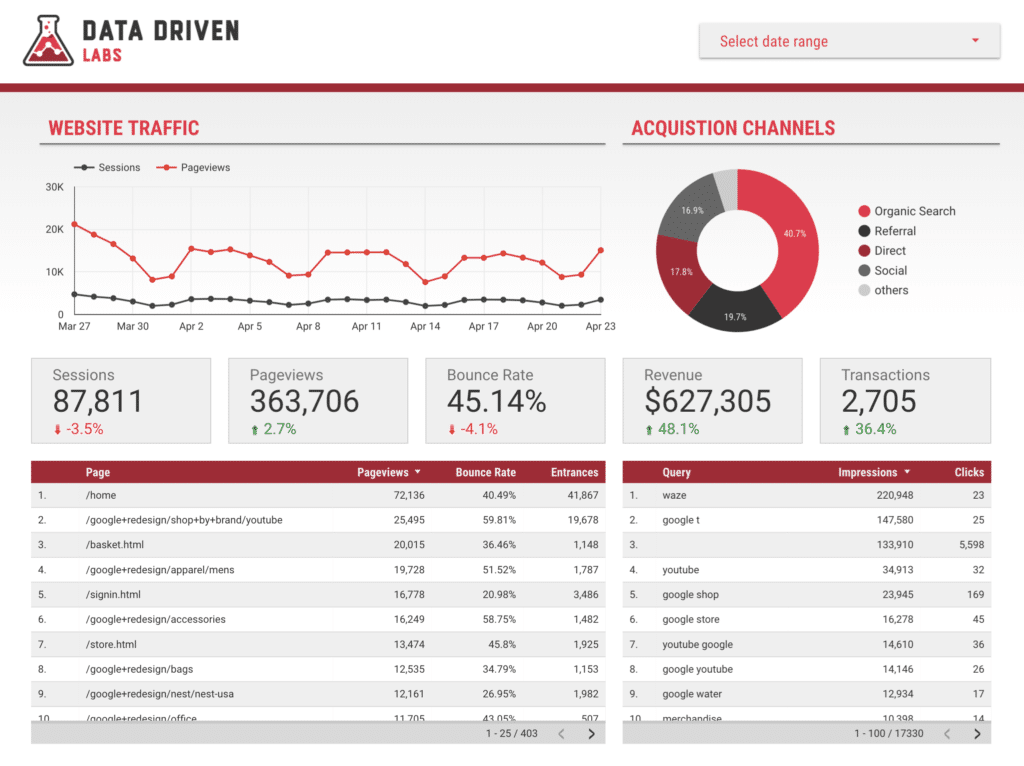 Our example Google Data Studio dashboard
Our example Google Data Studio dashboard 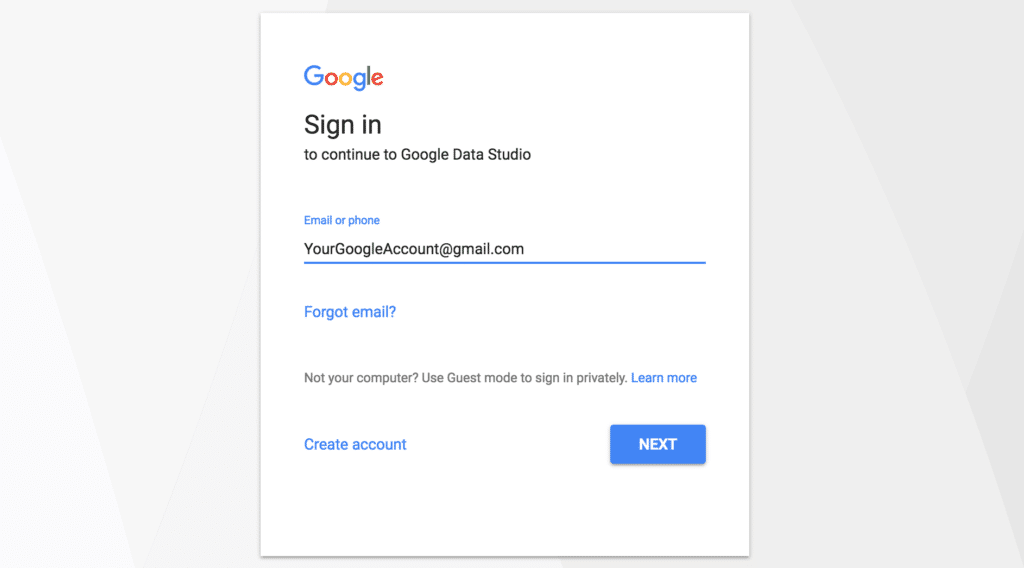 Sign in to Google Data Studio with your Google Analytics account
Sign in to Google Data Studio with your Google Analytics account  Create a blank dashboard
Create a blank dashboard  Rename your dashboard
Rename your dashboard  Click Create New Data Source
Click Create New Data Source  Find and select the Google Analytics connector
Find and select the Google Analytics connector 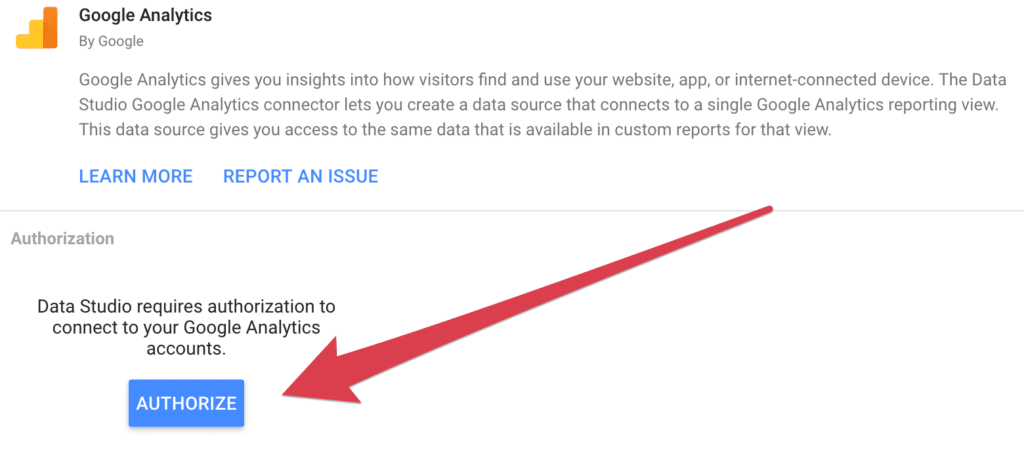 Authorize the Google Analytics connector
Authorize the Google Analytics connector  Rename, select account/property/view, and connect
Rename, select account/property/view, and connect 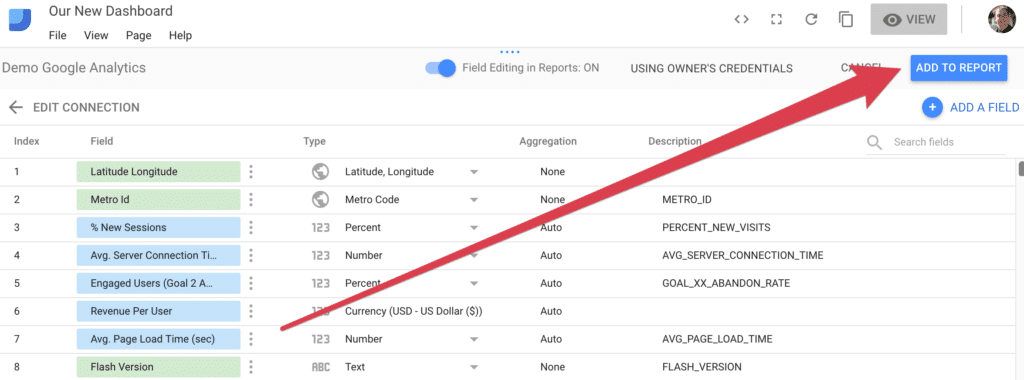 Click “Add to Report”
Click “Add to Report”  Under “Resource” select “Manage added data sources”
Under “Resource” select “Manage added data sources”  Click “Add A Data Source”
Click “Add A Data Source”  Select “Search Console”
Select “Search Console”  Rename, select site and table, connect to your dashboard
Rename, select site and table, connect to your dashboard  Elements you can add to your dashboard
Elements you can add to your dashboard 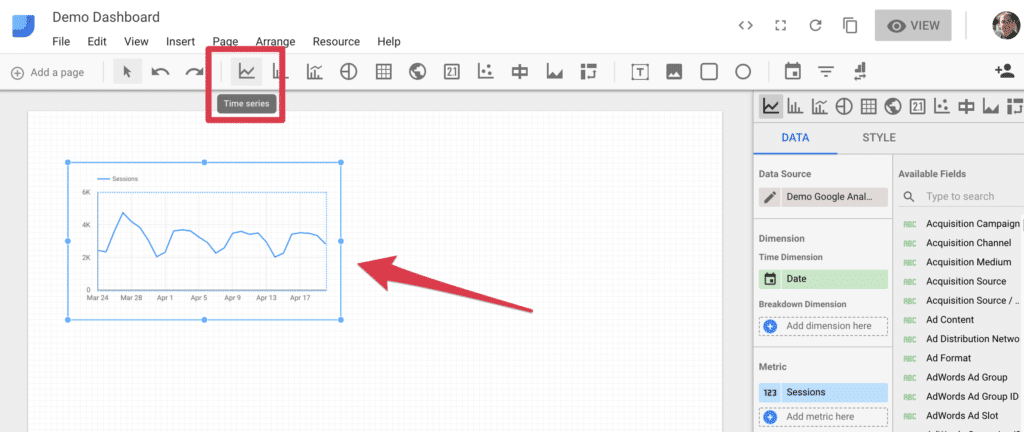 Add a time series graph
Add a time series graph 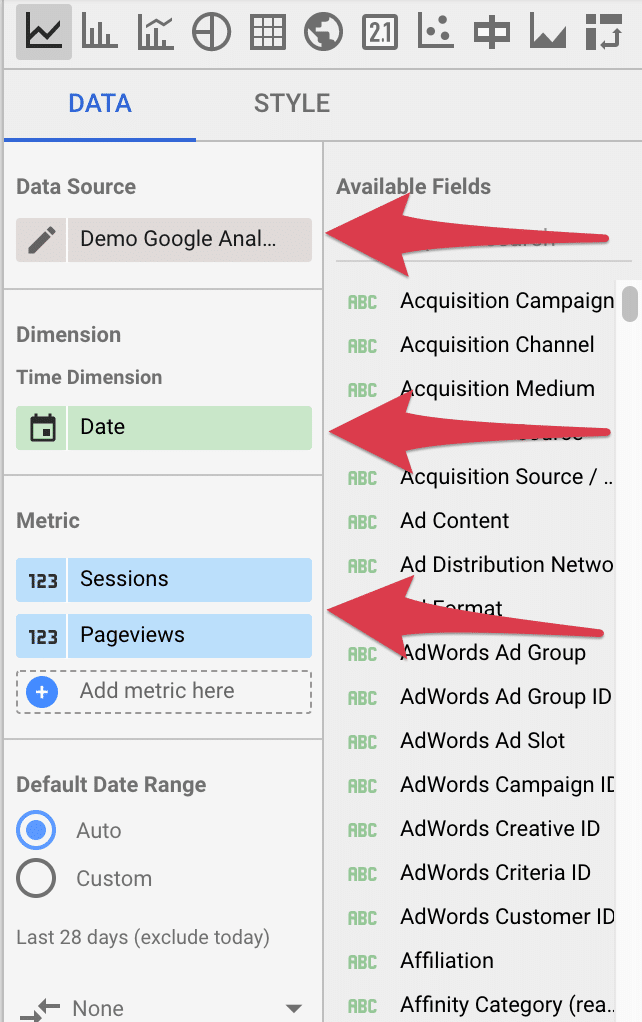 Update your data source, dimension and metrics
Update your data source, dimension and metrics  Add a pie chart
Add a pie chart 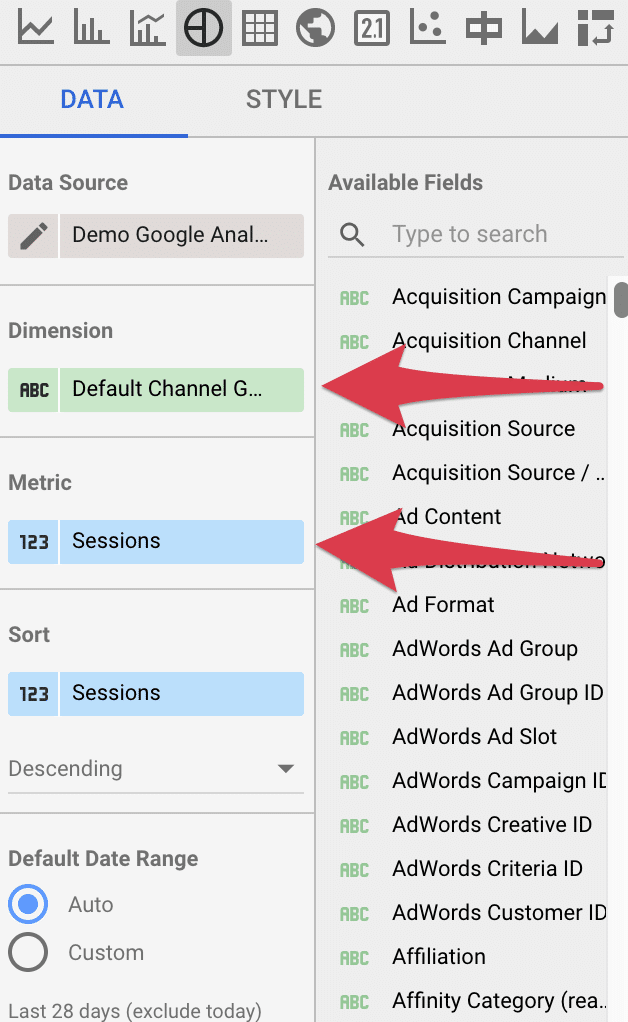 Update your data source, dimension and metrics
Update your data source, dimension and metrics 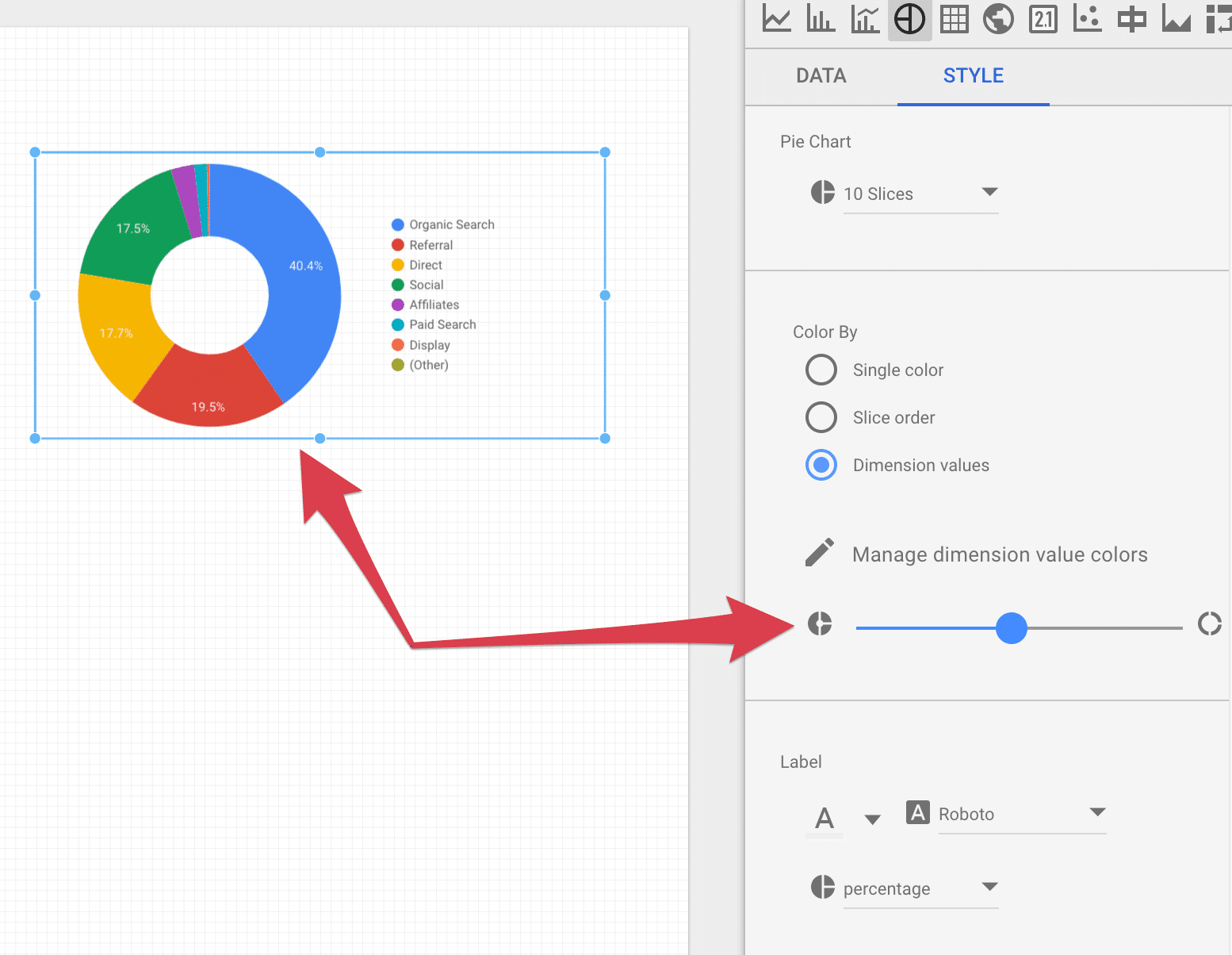 Stylize your element
Stylize your element 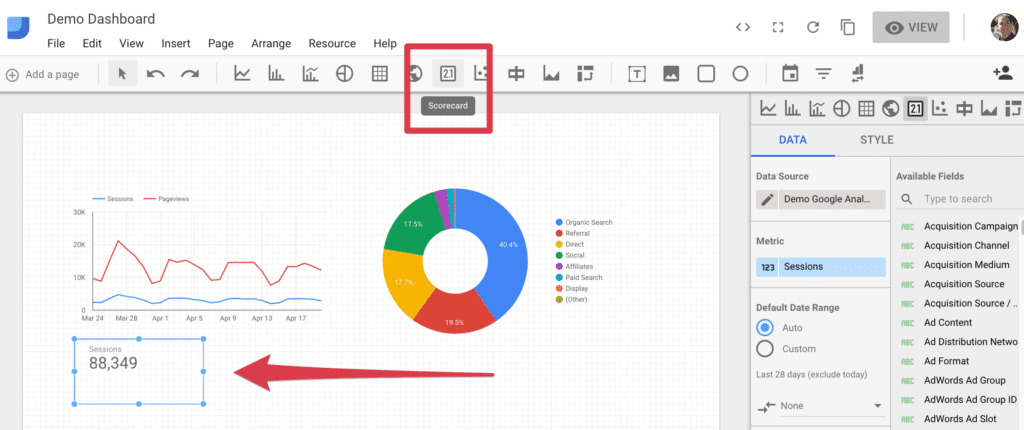 Add a scorecard
Add a scorecard  Compare with previous period
Compare with previous period  Add additional scorecards
Add additional scorecards  Add a table
Add a table 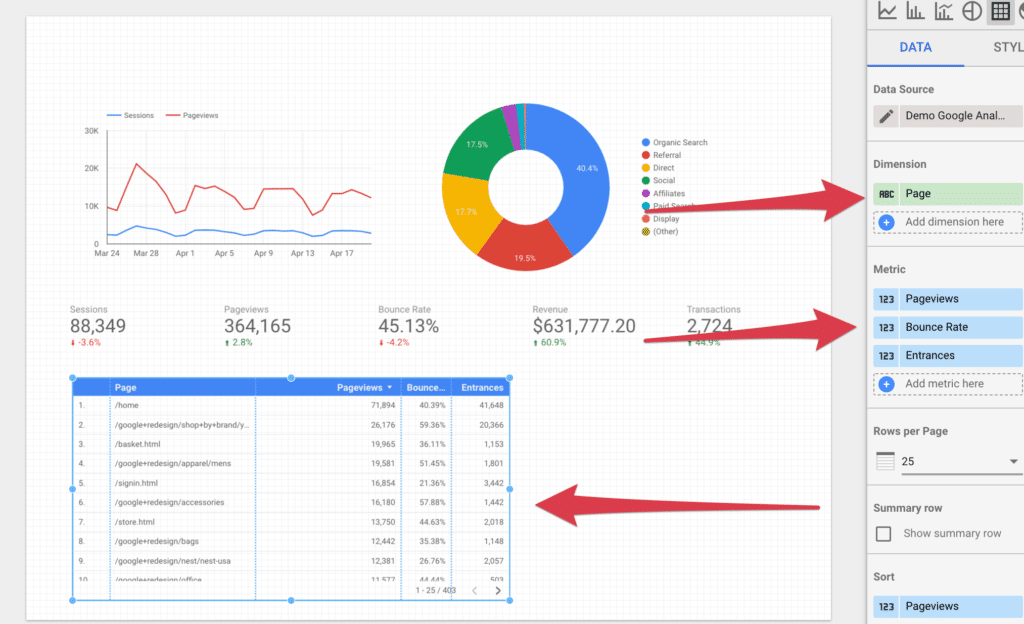 Setup dimensions and metrics
Setup dimensions and metrics 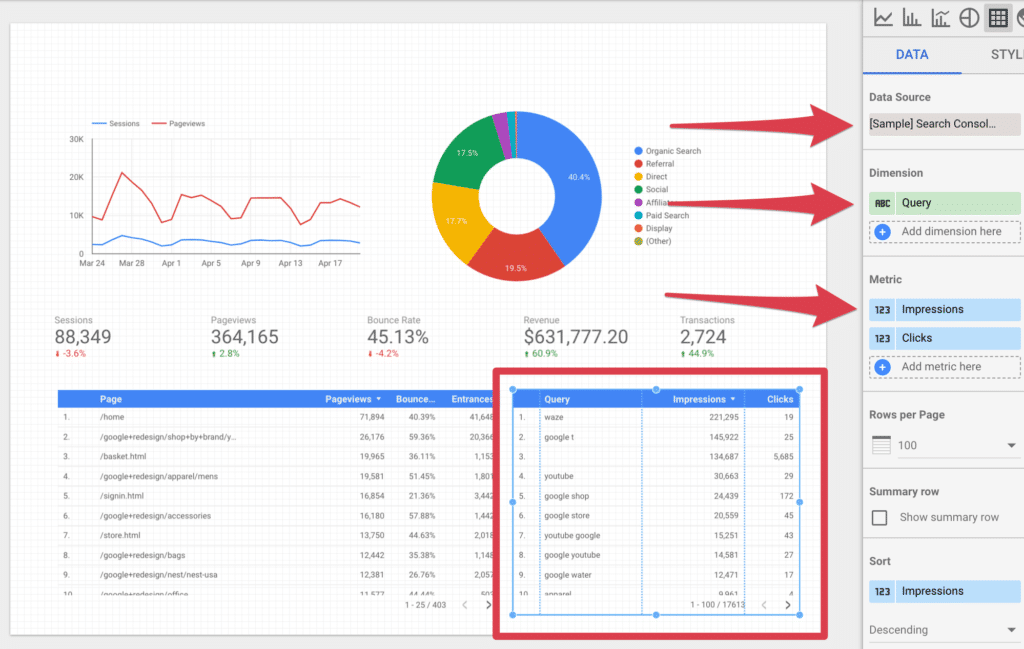 Add a second table & setup dimensions and metrics
Add a second table & setup dimensions and metrics 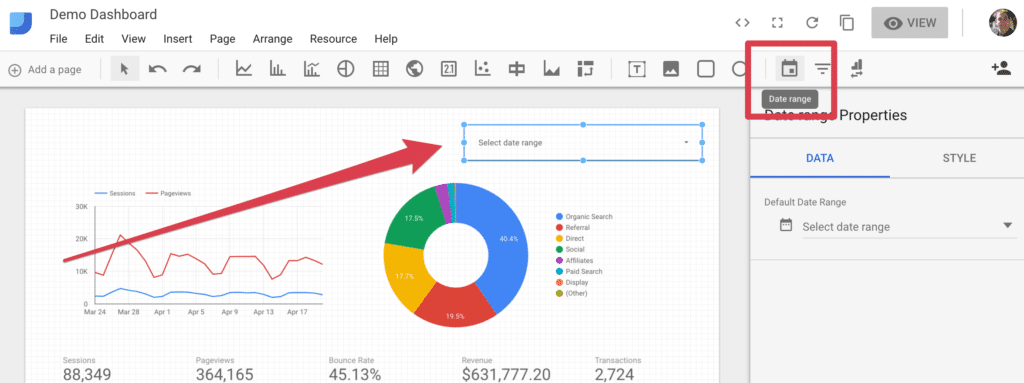 Add date range filter
Add date range filter 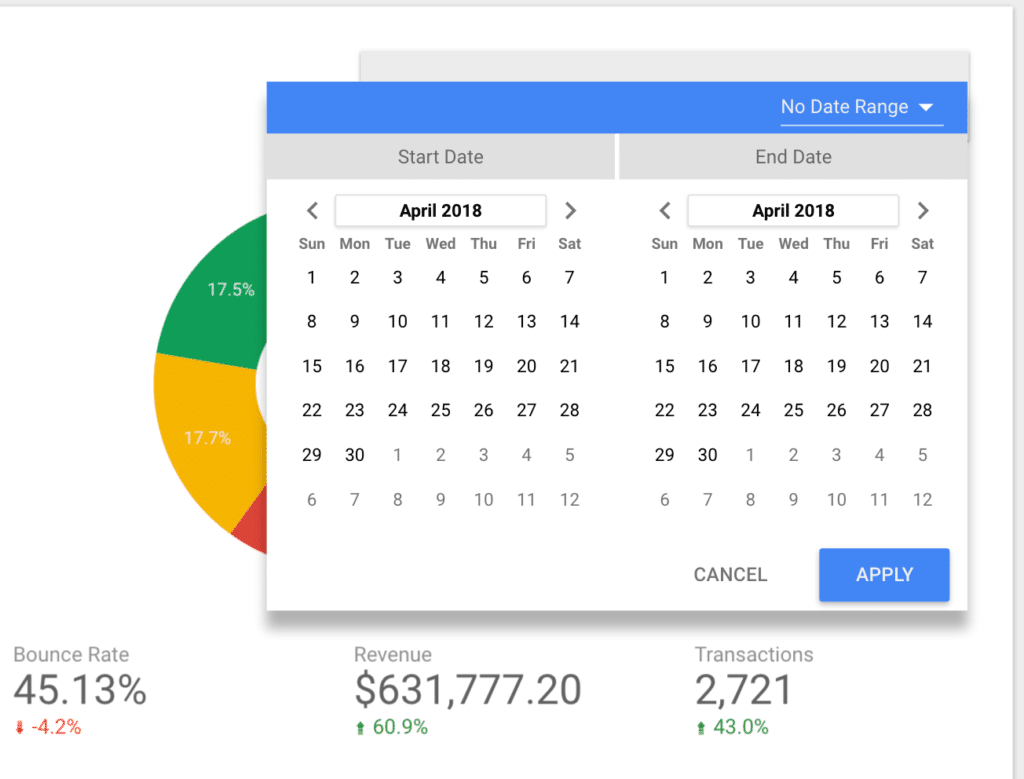 View date range filter
View date range filter  Add text
Add text  Add image
Add image  Our added image
Our added image 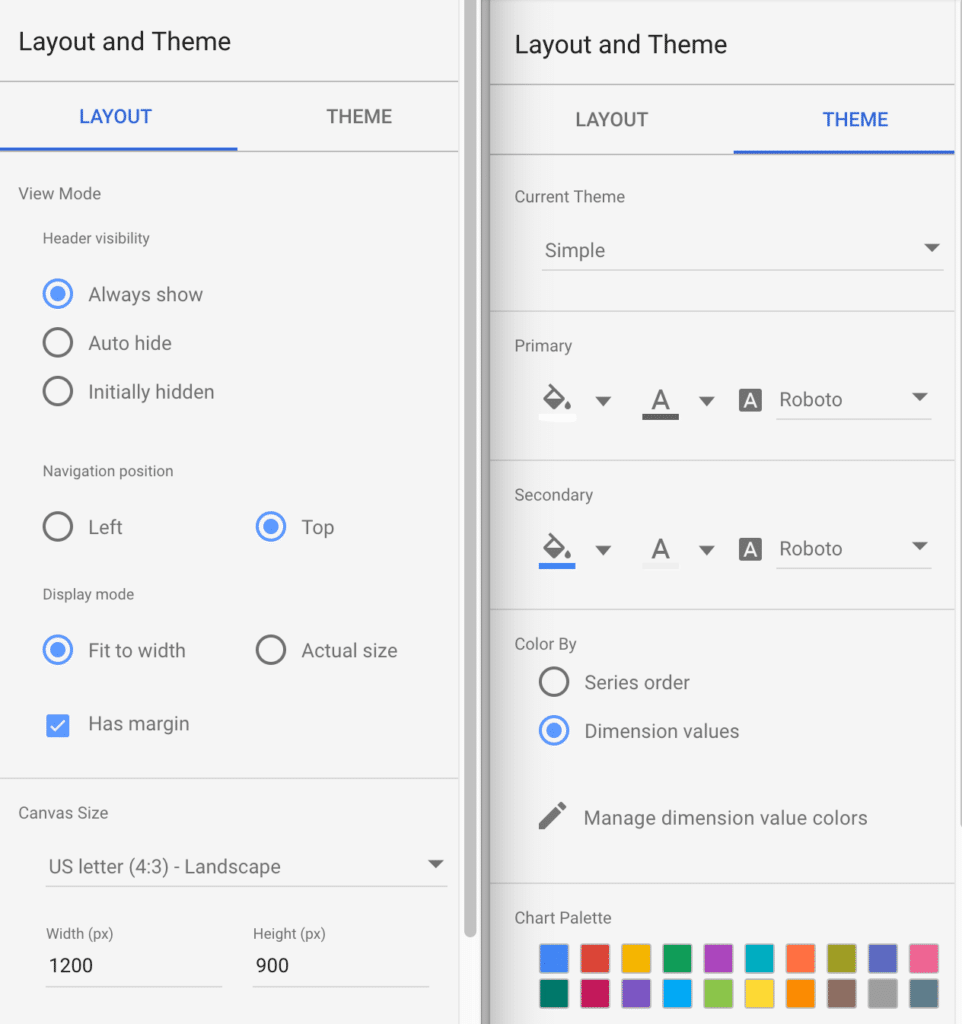 Layout & theme tabs
Layout & theme tabs 


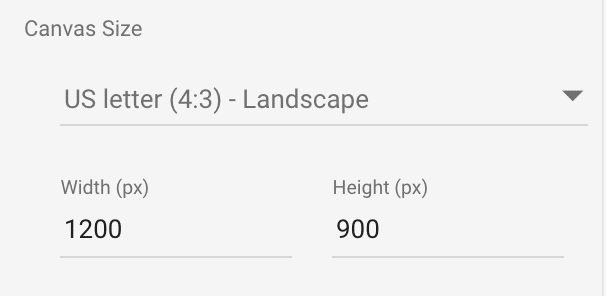
 Before styling
Before styling![The Brand New Strategy for Increasing Email Open Rates by 5X [Infographic] 10 Ways to Use Video in Sales 2.png?t=1525094353438&width=730&height=347&name=10 Ways to Use Video in Sales 2 The Brand New Strategy for Increasing Email Open Rates by 5X [Infographic]](https://blog.hubspot.com/hs-fs/hubfs/00-Blog-Related_Images/10-Ways-to-Use-Video-in-Sales-2.png?t=1525094353438&width=730&height=347&name=10-Ways-to-Use-Video-in-Sales-2.png)
![The Brand New Strategy for Increasing Email Open Rates by 5X [Infographic] send now hubspot sales bar.png?t=1525094353438&width=1000&name=send now hubspot sales bar The Brand New Strategy for Increasing Email Open Rates by 5X [Infographic]](https://blog.hubspot.com/hs-fs/hubfs/00-Blog-Related_Images/send-now-hubspot-sales-bar.png?t=1525094353438&width=1000&name=send-now-hubspot-sales-bar.png)
![The Brand New Strategy for Increasing Email Open Rates by 5X [Infographic] HUBSPOT Sales Infographic final 01 compressor.jpg?t=1525094353438&width=700&height=4385&name=HUBSPOT Sales Infographic final 01 compressor The Brand New Strategy for Increasing Email Open Rates by 5X [Infographic]](https://blog.hubspot.com/hs-fs/hubfs/00-Blog_Thinkstock_Images/HUBSPOT-Sales-Infographic_final-01-compressor.jpg?t=1525094353438&width=700&height=4385&name=HUBSPOT-Sales-Infographic_final-01-compressor.jpg)

































